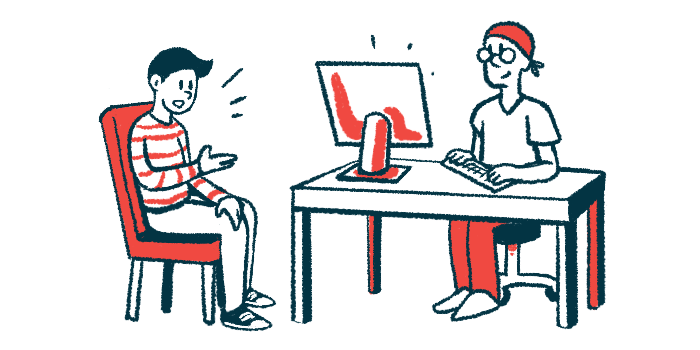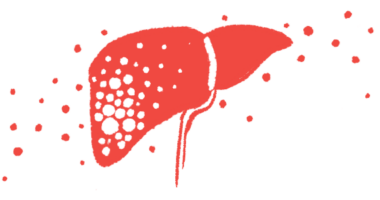Scenesse Treatment May Improve Life Quality for EPP Patients: Study
Implant for light intolerance may help ease daily living, enable activities

Treatment with Scenesse (afamelanotide) — an implantable medicine used to treat people with intolerance to light — can help improve life quality for those with erythropoietic protoporphyria (EPP), making it easier for them to do certain activities, such as going to work or on vacation, a recent study suggests.
The study found that people with EPP in the Netherlands have poorer quality of life scores compared with the general Dutch population. The rare condition affects patients’ ability to travel and do outdoor activities, or even work in an office with a lot of windows.
“This is the first study that reports that treatment can possibly have a positive impact on employment rate,” the researchers wrote, noting that the findings are broadly in line with other data suggesting that Scenesse can ease photosensitivity in people with EPP.
The study, “Erythropoietic protoporphyria in the Netherlands: Clinical features, psychosocial impact and the effect of afamelanotide,” was published in The Journal of Dermatology.
Scenesse treatment seen to ease symptoms of EPP
Erythropoietic protoporphyria is characterized by skin photosensitivity, a condition where light exposure can cause symptoms like intense pain and skin redness. People with EPP usually need to develop strategies for avoiding or minimizing light exposure from a young age.
Constantly taking such measures can cause difficulties in social situations and lead to mental health challenges, but there has been minimal research about the impact of EPP on these aspects of daily living.
Scenesse, a prescription medicine that’s injected under the skin, reduces light sensitivity by increasing melanin production and acting as an anti-oxidant. It’s approved in the U.S. and in Europe to reduce light sensitivity in people with EPP. The therapy is sold by Clinuvel, which was not directly involved in this study.
To learn more about how EPP affects the psychological and social well-being of patients, a quartet of scientists in the Netherlands conducted a survey at Erasmus MC Rotterdam. A key aim was to examine the effects of Scenesse treatment.
“This large single-center cohort [group] study provides novel insights into the impact of EPP on daily social functioning, which is often mentioned in publications on EPP but has never objectively been assessed,” the team wrote.
Adults with EPP at the researchers’ center were surveyed on two occasions: once while they were not on Scenesse and then again after starting treatment. A total of 121 patients were included in the analyses.
Demographic information for the surveyed patients was generally comparable to data for the adult Dutch population.
The researchers noted that rates of higher education were slightly higher among EPP patients compared with national averages. Conversely, the employment rate was lower.
This large cohort study demonstrated that Dutch EPP patients appear to have a higher unemployment rate, despite a higher education level, that EPP has a negative impact on holidays, quality of life and social functioning.
Clinical data showed that most patients started to experience symptoms of EPP before the age of 2. However, diagnostic delays were common, often lasting years. In fact, most patients weren’t diagnosed with EPP until around age 8.
“Although the diagnostic delay appears to have improved, there is still a need for further actions to identify patients early and to ensure referral to an expert center, since obtaining information about EPP from expert physicians is important for the wellbeing of EPP patients,” the researchers wrote.
EPP worst during childhood, according to patients
The survey participants generally reported that EPP symptoms had the most troublesome effect on their daily life during childhood and adolescence, with less substantial impacts in adulthood.
“Patients report that with increasing age they learn to cope with EPP related limitations, they adapt their lifestyle, but still consider their lives as severely restricted,” the researchers wrote.
They noted that Scenesse is not approved for use in children, “which is very unfortunate since most EPP patients report problems during childhood which has influenced their lives the most.”
A majority of patients (60.4%) reported that EPP influenced their career choice, and many had made adjustments to make working more manageable. For example, some employees found a workspace far from windows, or covered up windows with yellow foil to filter out the rays that mainly cause photosensitivity.
Nearly all patients (98.3%) said that EPP had affected the choices they’d made about holidays and vacations.
As part of the surveys, patients completed an EPP-specific questionnaire about life quality called EPP-QoL. Median scores on this measure increased significantly after patients started on Scenesse, from 44 to 75 points, indicating a marked improvement in life quality.
Patients also completed several generic measures of life quality. Scores on these measures were generally worse among EPP patients compared with the overall Dutch population. Most of the scores improved significantly after patients started on Scenesse, though average scores for EPP patients were still significantly worse than national averages for most scores, even with treatment.
About 5% of patients in the initial survey reported being unable to work due to EPP. However, among the patients surveyed after starting treatment with Scenesse, none said their disease stopped them from working.
Following treatment, more patients reported working at a full- or part-time job, and some said they considered a career switch.
The number of patients who reported having to adjust travel plans due to EPP also was generally lower in the second survey, after the treatment with Scenesse.
“This large cohort study demonstrated that Dutch EPP patients appear to have a higher unemployment rate, despite a higher education level, that EPP has a negative impact on holidays, quality of life and social functioning,” the researchers concluded, adding, “These differences diminished after initiation of [Scenesse] treatment, with residual unmet need.”








